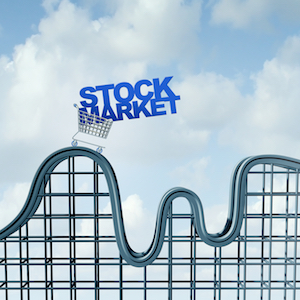 In what may come as no surprise, retirement plan participants who invest through self-directed brokerage accounts (SDBAs) saw significant losses, on average, in the second quarter.
In what may come as no surprise, retirement plan participants who invest through self-directed brokerage accounts (SDBAs) saw significant losses, on average, in the second quarter.
According to Charles Schwab’s SDBA Indicators Report, the average account balance across all SDBA participant accounts finished at $283,485 for the second quarter ending June 30—an 18.58% decrease year-over-year and a 14.62% decrease from the first quarter of 2022.
Trading volumes were lower from last quarter, at an average of 11.2 trades per account from 13.7 last quarter. Participants made the most trades in their equity holdings, followed by ETFs and mutual funds. On average, participants held 12.5 positions in their Schwab account, higher than last year and similar to last quarter.
The Q2 SDBA Indicators reflected another volatile period for markets prior to the July and August market recovery. In the second quarter, the S&P 500 hit its lowest level since December 2020 as still-high inflation, increases in interest rates, rising recession risks, and ongoing geopolitical unrest pressured stocks and other assets, Schwab notes.
Against this backdrop, equity allocations decreased to 33% of assets, down from 37% last year and 36% in the first quarter. Cash allocations increased to 15% of assets, up from 12% last year and 13% in the first quarter.
The SDBA Indicators Report for the second quarter includes data collected from approximately 184,000 retirement plan participants who currently have balances between $5,000 and $10 million in their Schwab Personal Choice Retirement Account (PCRA). It tracks a wide variety of investment activities and profile information on participants with a Schwab PCRA, ranging from asset allocation and asset flow trends to age trends and trading activity.
Allocation Trends
Overall, participant holdings remained similar to those in the previous quarter, with an increase in cash holdings, the report further notes.
Equities remained the largest holding. The largest equity sector holding was Information Technology at 29.1%. The top equity holdings were again Apple (12%), Tesla (8.1%), Amazon (4.4%) Microsoft (3.4%) and NVIDIA (1.9%). Consumer Discretionary was at 20.02% and Healthcare was third at 9.03%, followed by Financials at 8.59% and Communication Services at 8.26%, Schwab notes.
Mutual funds were the second largest holding at 28.8%, with the largest allocation going to large-cap stock funds at 33.9%. They were followed by taxable bond (20%) and international (14.2%) funds.
ETFs held nearly 21% of participant assets. Among ETFs, investors continued to allocate the most dollars to U.S. equity (50.9%), followed by fixed income (13.8%), international equity (13.1%) and sector (12%) ETFs.
Other Highlights
Additional findings show that advised accounts, not surprisingly, held higher average account balances compared to non-advised accounts at $460,376 versus $240,974. Those participants who used advisors displayed a more diversified asset allocation mix and had a lower concentration of assets in particular securities, the report observes.
SDBA participants aged 58 and over (part of the Baby Boomer generation) were 30% out of all participants, while Gen X (age 42-57) participants were higher at 46% and Millennials (age 30-41) were at 19%. Gen X also had the most advised accounts at 50%, followed by Baby Boomers (31.5%) and Millennials (15.4%).
Meanwhile, Baby Boomers had the highest SDBA balances at an average of $452,381, followed by Gen X at $252,477 and Millennials at $85,121.
Millennials and Gen X again had the higher percentage of mobile trades at 33% and 26%, respectively, while Baby Boomers had 23%.

